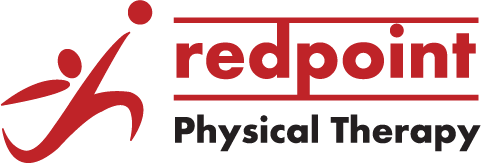Should YOU be doing foot exercises? Do you have feet? Then, Yes.
For years, the medical world treated foot pain with rigid orthotics. The thought process wasn’t entirely flawed. If something hurts to move, then stop moving it. During my first few years of practice, I didn’t think much else of it. Several years ago, I went to a seminar on physical therapy for runners at my alma mater (with none other than the Dr. Irene Davis, a major name in the running research world). One slide in her presentation blew the old theory of “lock it up” out of the water, and my practice has never been the same. To summarize the picture, if you injured your neck, you wouldn’t stay in a brace for the rest of your life. Why would your arch be any different?
Whenever patients tell me that they wear shoes and arch supports all the time, I ask them to specify. So, when you get up to go to the bathroom in the middle of the night? (Sometimes, yes). When you’re in the shower? (Usually, no). When you walk on the beach?? (50/50, but I always feel a little sad thinking about people wearing sneakers at the beach – where’s the fun in that?). What if you need to wear dressy shoes? No matter what, there are times when you will need to wear no shoes or different shoes, but since you have spent so much time locking up your arch, it now has no idea what to do with this footwear change. Even if you don’t wear orthotics, you’re probably guilty of spending most of your life in shoes, which has almost the same effect. So what should we do?
We can fix that!
That course so many years ago, as well as the Certified Running Gait Analyst course I went to more recently were both geared toward physical therapy for runners. But at Redpoint, we take that knowledge and extrapolate it out to… well… anyone with feet. The more you understand about the human body and general kinematics, the more you realize the importance of arch function. Feet shouldn’t be rigid any more than they should be flat; what’s left in the middle is a level of stability and muscular control that many of us are missing. And if that’s missing, then we should fix it!
According to a systematic review done in 2011, the prevalence of foot pain in people aged 45 and older to be 24%. Based on my clinical experience, I might speculate that 24% is a bit low. Foot pain is common, so people think it is normal and don’t report it to their doctor.
The foot works as a shock absorber. When it is working properly, the arch works to collapse (pronate) and stiffen (supinate) in order to disperse forces that occur during gait. Culturally, we really mess this up by wearing shoes all of the time and sitting for large parts of the day. As a result, many of us have collapsed arches or rigid arches as well as poor control of our intrinsic foot muscles, leading to an increased likelihood of foot pain, shin pain, knee pain, hip pain, back pain, and balance impairments.
For people who walk or stand a lot, or people who run or play sports, having a strong arch is really important. But really, strong feet are an important base for anyone. Try these tests to assess your own foot health:
Toe Splaying: Keeping your toes flat on the floor, try to spread them apart. You should be able to see space between each toe.
Big toe extension: Keeping your toes flat on the floor, try to lift your big toe only. Can you get to 45 degrees?
Big toe abduction: Keeping your toes flat on the floor, try to move your big toe toward your midline.
If you can’t do all of these motions, then you have some work to do. The good news is, you can totally fix this! By trying to perform the exercises in the above assessment every day, you can significantly improve your foot posture and improve your body’s ability to absorb and disperse weight with each step. If done properly, the result will be less pain and more efficient movement patterns.
As always, blogs are not prescriptive, and this is a simplistic treatment plan. If you have any questions, we’d be happy to help you. If you need more guidance on managing your foot strength, call the office to set up an initial evaluation.
If you’re a runner, don’t forget to schedule a formal Running Gait Assessment with us! You’ll get a ton of data on your running mechanics and some tips on how to improve it. I promise, it will be fun!
Run smarter with Redpoint!






